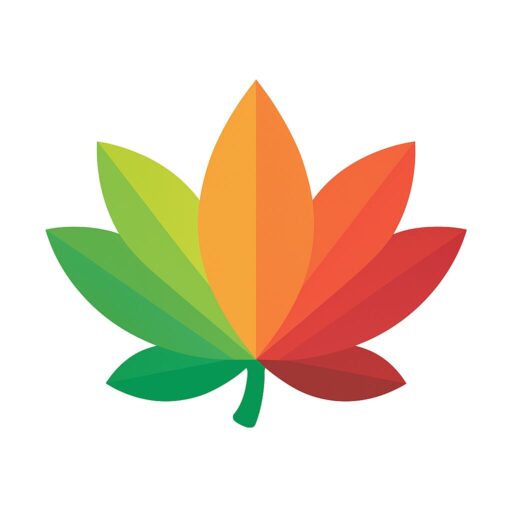Blue Zones are regions where people live significantly longer than average—places like Okinawa, Japan and Sardinia, Italy. National Geographic explorer Dan Buettner identified these areas and documented the common lifestyle patterns among these populations that contribute to their exceptional longevity.
While many people think of Blue Zones as simply following a vegetarian diet, Buettner’s research reveals something deeper: these populations treat their bodies with the respect they deserve. This isn’t a new concept—treating the body as sacred goes back centuries across cultures worldwide.
Yes, studies show that genetics account for about 20-25% of longevity factors. But here’s the crucial insight: we can’t control our genes, but we can stop shooting ourselves in the foot with destructive behaviors. Blue Zone living is largely about subtraction—removing the habits that accelerate aging instead of adding unnecessary new routines.
Blue Zone vs Red Zone: The Comparison
| Blue Zone (Longevity Habits) | Red Zone (Aging Accelerators) |
|---|---|
| Relationships: Small circle of close, trusted friends | Relationships: Large network of superficial connections |
| Social Time: Quality conversations with depth and meaning | Social Time: Constant small talk and surface interactions |
| Stress Management: Daily contemplation, prayer, or meditation | Stress Management: Ignoring stress until it becomes chronic |
| Work-Life Balance: Clear boundaries between work and personal time | Work-Life Balance: Always “on” – checking emails at all hours |
| Physical Activity: Regular, gentle movement integrated into daily life | Physical Activity: Intense workout binges followed by sedentary periods |
| Eating Habits: Mindful meals shared with others | Eating Habits: Fast food consumed while multitasking |
| Purpose: Clear sense of meaning and reason for living | Purpose: Drifting without clear direction or goals |
| Rest: Regular sleep schedule with adequate recovery time | Rest: Inconsistent sleep, sacrificing rest for productivity |
| Environment: Calm, organized living space | Environment: Chaotic, cluttered, overstimulating surroundings |
| Community: Belonging to groups aligned with personal values | Community: Participating in activities that drain energy |
| Learning: Continuous growth through observation and reflection | Learning: Information overload without processing time |
| Conflict: Address issues directly but calmly | Conflict: Avoid confrontation or engage in heated arguments |
Building Your Personal Blue Zone
Start With Your Environment Your living space affects your longevity. Blue Zone environments are typically calm and organized. Create spaces in your home that invite restoration rather than stimulation. This might mean a reading corner, a meditation space, or simply a clutter-free bedroom that promotes good sleep.
Cultivate Deep Connections Loneliness increases mortality risk by 26%, but the solution isn’t more social events. Focus on strengthening existing relationships rather than expanding your network. Regular phone calls with family members, weekly coffee dates with close friends, or joining a small group centered on shared interests can provide the social connection that extends life.
Develop Your Stress-Reduction Practice Blue Zone populations all have daily stress-reduction rituals. Find what works for your temperament. This could be morning journaling, evening walks, weekend nature time, or brief meditation sessions. The key is consistency rather than intensity.
Find Your Purpose Japanese centenarians call it “ikigai”—your reason for being. This doesn’t have to be grand or public. Your purpose might be mastering a craft, mentoring someone, creating beautiful meals for your family, or contributing to your community in quiet ways. Purpose gives you a reason to get up each morning and has been linked to increased longevity.
Master Something Meaningful Blue Zone residents often have lifelong pursuits they continue to develop. Whether it’s gardening, cooking, music, or a professional skill, having something you’re always improving provides mental stimulation and satisfaction. Choose based on what genuinely interests you, not what impresses others.
Create Sustainable Routines Blue Zone living is about sustainable daily habits rather than dramatic lifestyle overhauls. Small, consistent actions compound over time. This might mean eating dinner without screens, taking a short walk after meals, or spending ten minutes in quiet reflection before bed.
The Introvert Advantage in Blue Zone Living
What’s particularly relevant for many people is how Blue Zone habits often come naturally to those who prefer quieter lifestyles:
Quality Over Quantity: Many people naturally prefer deeper relationships and meaningful activities—exactly what Buettner’s Blue Zone research supports for longevity.
Reflection and Contemplation: The tendency toward introspection aligns with the contemplative practices found in long-lived populations.
Subtraction Over Addition: Understanding what to eliminate from your life is often more powerful than adding new habits or routines.
Sustainable Practices: Rather than dramatic lifestyle overhauls, Blue Zone living emphasizes removing harmful patterns while maintaining what already works.
Practical Steps to Start Today
Week 1: Identify one relationship that deserves more attention. Schedule regular contact with this person.
Week 2: Establish a daily 10-minute quiet time for reflection, meditation, or planning.
Week 3: Choose one area of your living space to organize and optimize for calm.
Week 4: Begin developing or deepening one skill or interest that brings you satisfaction.
Moving Forward
Creating your own Blue Zone isn’t about following someone else’s formula. It’s about designing a lifestyle that supports your well-being while honoring your natural temperament and preferences.
The goal isn’t to live to 100—it’s to live well for however many years you have. Blue Zone principles provide a framework for making choices that support both longevity and life satisfaction.
Start where you are. Use what you have. Do what you can. Your personal Blue Zone begins with the next choice you make.
The Bottom Line
Dan Buettner’s Blue Zone research teaches us that longevity comes from sustainable daily practices, not extreme measures or miracle diets. The key insight is that we can’t change our genes, but we can stop undermining our health with destructive habits.
This is encouraging news for anyone seeking personal growth. Many of the practices that support long, healthy lives—such as cultivating deep relationships, regular contemplation, purposeful work, and organized environments—are about removing obstacles rather than adding complications.
The concept of treating our bodies with respect isn’t new or complicated. What’s new is having research that validates these timeless principles. You don’t need to overhaul your entire life. You need to identify which habits are working against you and systematically remove them.
The longest-living people on earth aren’t following complex programs or expensive protocols. They’ve simply avoided shooting themselves in the foot while maintaining practices that honor their well-being.
Personal growth through subtraction—removing what harms rather than constantly adding what supposedly helps—offers a sustainable path forward that anyone can follow.

